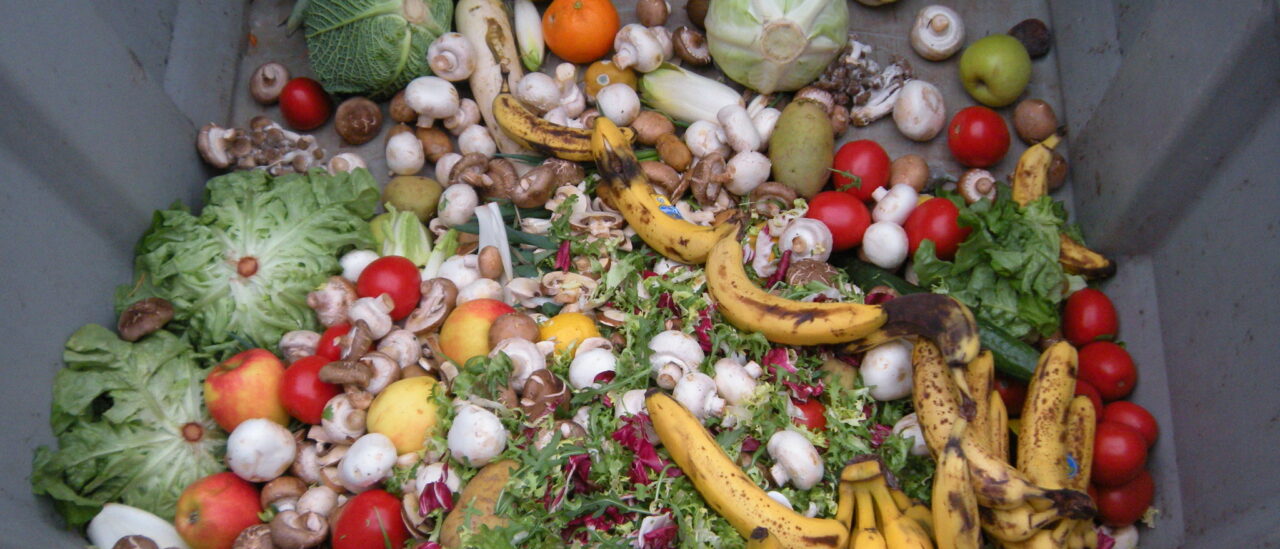
Food waste in focus: We need to act
Each resident of Viken throws away an average of 75 kilos of fully edible food per year.
Thursday 29 September is the international day against food waste. And on the international day against food waste, it is important to focus on what can actually be done to reduce the number of kilograms of fully edible food that is thrown away in Norway every single year.
At Skjeberg folk high school, together with the other folk high schools in Viken, in recent years they have participated in a project under the auspices of Viken county council to do just this.
– We know that food waste is a global problem. Viken county council want to do something about that problem. This is why we have arranged a project with a focus on reducing food waste in line with the UN’s sustainability goals. Today we are at Skjeberg folk high school to work together with teachers and students to see how we can collectively contribute to reducing food waste in our canteens in Viken county municipality, says Hilde Rønning, senior adviser Viken county municipality.
Skjeberg Folkehøyskole works according to the UN’s sustainability goals and has therefore had food waste on the agenda for a long time. On average, between 1.5 and 5 tonnes of edible food is thrown away per year at the folk high schools in Viken. This corresponds to somewhere between NOK 80 to 350,000 a year.
The figure in Norway in total is 400,000 tonnes. Per inhabitant in Viken: 75 kilos. The figures are too high, and Skjeberg Folkehøyskole will attempt to do something about it.
– We have been working on it for a while. We started by using smaller plates in order to have less waste. In 2017, we started weighing food waste for pupils, staff and the kitchen. Now we are also involved in a project with Viken county municipality, says Sindre Engen, head of department Skjeberg Folkehoyskole.
He also have some tips and advice for other canteens;
– The more aware we are, the less waste there will be. The most important thing is enough plate size and smaller portions. After all, this topic includes both economics and the environment. We have a small budget, so it helps to save where you can. Just think about it and give it a try. It’s not that much work to weigh. It’s going very well. We put out some buckets and then we weigh. It takes five minutes extra time. It sounds much worse than it actually is, concludes Engen.
Do you want more tips? Here they are:
1. PLAN YOUR PURCHASE AND WRITE A SHOPPING LIST
Every 8th shopping bag of food that we Norwegians buy ends up in the bin. With good routines, less food will be thrown away, and money and the environment will be saved. Plan your purchases and try to avoid impulse purchases. Become aware of how much you and your family eat and adjust the quantities you shop accordingly. Write a shopping list after checking the cupboard and fridge, and avoid impulse purchases on an empty stomach!
2. TAKE DATE MARKING WITH A PINCH OF SALT – LOOK, SMELL AND TASTE
The food may well be edible for a long time after the expiry date. In stores, more and more goods are labeled “Best before, often good after”. Your best tool for checking whether the food is still edible is your senses. Look, smell and taste the food before you decide to throw it away.
Respect the “Use by” label. But remember that the food does not automatically go bad even if the date has passed. You are allowed to use your senses and common sense.
3. MAKE SMALLER PORTIONS
One of the biggest sources of food waste at home is meal leftovers, closely followed by bread, fruit and vegetables. We cook too much food, fill ourselves with too large portions and throw what we don’t eat into the bin. Use smaller plates, so your stomach doesn’t get full before your eyes. Decide that “what you provide yourself with you must eat up”. If you make a large portion of something, then have a plan for what you want to do with the leftovers, or freeze them – also with a plan.
4. GET AN OVERVIEW OF THE REFRIGERATOR
A clean and tidy fridge makes it easier to keep track of and use what is there. Use the discoveries as inspiration to create new dishes. Look at leftovers as a resource you can experiment with, and plan for at least one creative leftover dinner a week.
5. EAT THE LEFTOVERS
To eat the food is to show respect for the work behind it, and the resources it takes to produce it. Remember to eat up the leftovers you keep, both in the fridge and freezer. You can make an amazing amount of good things from leftovers!
6. USE THE FREEZER BOX
The freezer is your friend when it comes to avoiding food waste. Freeze everything from herbs you don’t get to use, to sliced bread and dinner leftovers, and take it out when you need it. Leftovers of cream and stock can be frozen in ice cube trays, so you always have good bases to make something readily available.
(Source: Matprat.no)
